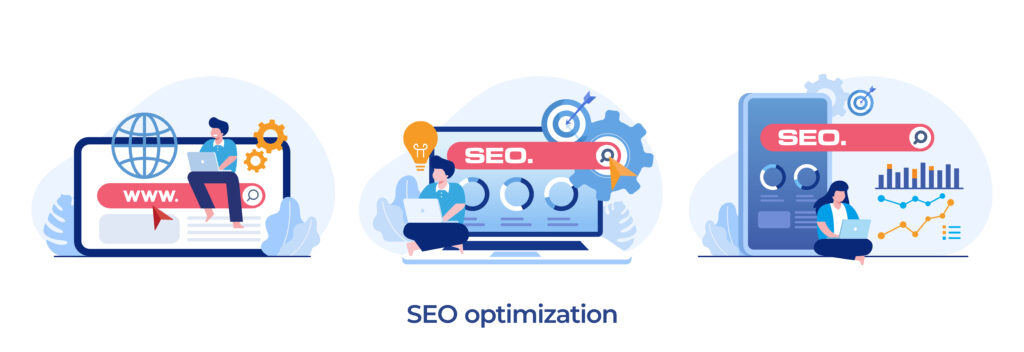Importance of Website Speed in User Experience and SEO

Understanding Website Speed and Its Impact on User Experience
Website speed is the amount of time it takes for a website to load or respond to a user’s request. In today’s fast-paced digital world, users expect websites to load quickly, and any delay can lead to frustration and a negative user experience. According to research by Google, 53% of mobile site visitors will leave a page that takes longer than three seconds to load. This means that a slow website speed can result in a high bounce rate and lower engagement metrics.
Website speed also affects user engagement and conversion rates. A fast-loading website can lead to a better user experience, increased engagement, and higher conversion rates. For example, a one-second delay in page load time can lead to a 7% reduction in conversions, according to research by Kissmetrics. Therefore, optimizing website speed can have a significant impact on the success of your online business.
The Importance of Website Speed in SEO
Common Causes of Slow Website Speed
Several factors can contribute to slow website speed. One of the most common causes is large image and video files. High-quality images and videos can significantly slow down website speed. Another cause of slow website speed is poor website hosting. Shared hosting environments can cause slow website speeds due to limited resources and high traffic volume.
Additional causes of slow website speed include outdated website code, excessive HTTP requests, and too many plugins or widgets. These issues can be addressed through optimization techniques, which we will explore in the following section.
Tools for Measuring Website Speed
Before optimizing website speed, it’s important to measure website speed using various tools. These tools can provide insights into website speed and identify areas that need improvement. Some of the most popular website speed measurement tools include:
- Google PageSpeed Insights
- GTmetrix
- Pingdom
- WebPageTest
These tools analyze website speed and provide suggestions for optimization. They also allow for comparisons between different websites and provide insights into how to improve website speed.
Improving Website Speed Through Optimization Techniques
There are several optimization techniques that can be used to improve website speed. One of the most effective techniques is image optimization. This involves compressing image files to reduce their size without compromising quality. Tools such as Adobe Photoshop and online tools like TinyPNG can be used for image optimization.
Another optimization technique is caching, which involves saving website data on a user’s device or browser to reduce the amount of data that needs to be loaded. This can significantly improve website speed and reduce server load. Content Delivery Networks (CDNs) can also be used to cache website data and improve website speed.
Reducing the number of HTTP requests, minimizing website code, and minimizing the use of plugins and widgets are additional optimization techniques that can improve website speed. These techniques can help reduce the load on the server and make website pages load faster.
Tips for Optimizing Images and Videos for Faster Website Speed
As mentioned earlier, large image and video files are one of the primary causes of slow website speed. Therefore, optimizing images and videos is crucial for improving website speed. Here are some tips for optimizing images and videos for faster website speed:
- Compress images and videos to reduce their file size without compromising quality.
- Use the correct format for images (JPEG, PNG, GIF) and videos (MP4, WEBM).
- Reduce the dimensions of images to match the required size on the website.
- Use lazy loading to defer the loading of images and videos until they are needed.
The Role of Website Hosting in Website Speed
Website hosting plays a crucial role in website speed. The type of hosting and the hosting provider can significantly impact website speed. Shared hosting environments can lead to slow website speeds due to limited resources and high traffic volume. Therefore, it’s important to choose a hosting provider that offers fast and reliable hosting services.
Virtual Private Servers (VPS) and Dedicated Servers are two hosting options that can significantly improve website speed. These hosting options provide dedicated resources and allow for better website speed and performance. However, they are more expensive than shared hosting environments.
The Future of Website Speed and Its Impact on User Experience and SEO
Conclusion
- All
- Branding
- Digital Marketing
- Graphic Designer
- Web Site
Tactics To Get Great Customer Reviews

Scaling Your Startup: Digital Marketing Strategies for Growth

The Power of Logo Redesign: How Brands are Boosting Their Future Prospects.

Mastering SEO for Business: Essential Strategies to Drive Traffic

Role of User Experience (UX) in Effective Web Design

Impact of Branding on Customer Loyalty and Retention

Benefits of Investing in Professional Branding for Your Web Design Business

Building a Brand Strategy that Aligns with Your Business Goals

Importance of Responsive Web Design for Mobile Devices.

Role of Branding in Attracting High-Value Clients

Future of Branding in a Digital World: Trends and Predictions

Benefits of Consistency in Branding Across All Marketing Channels

